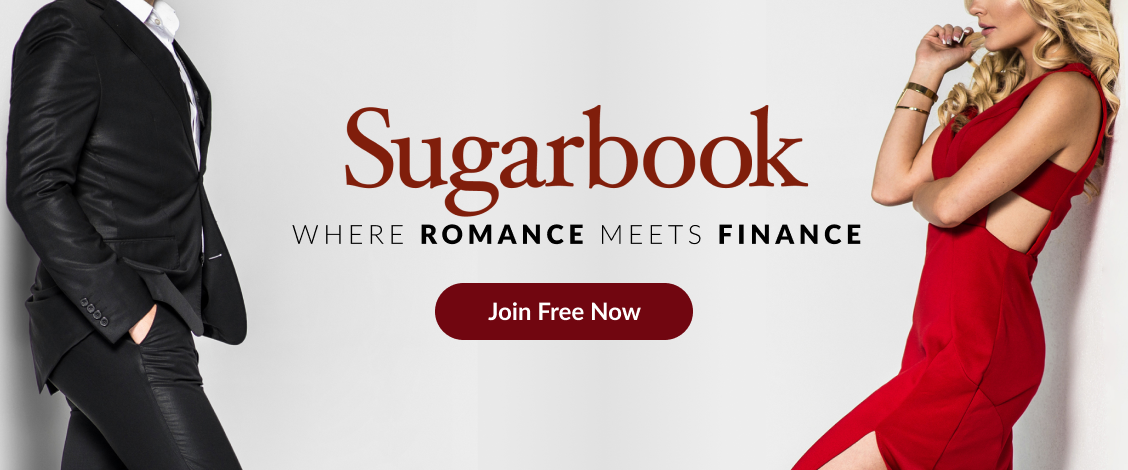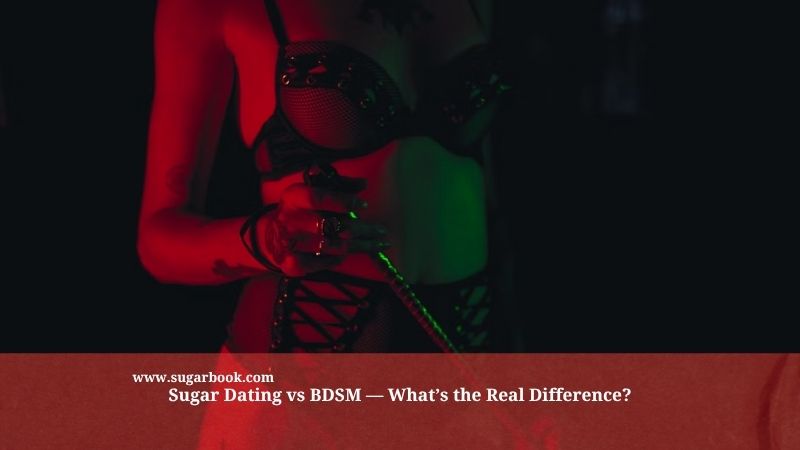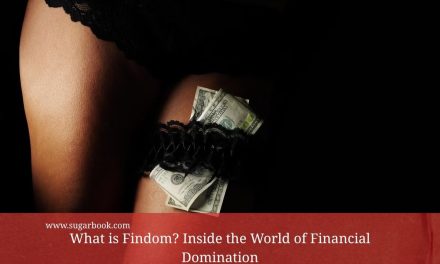
Meet successful sugar daddies and confident sugar babies on the world’s leading sugar dating app. Join free today.
As modern relationships continue to evolve in 2025, terms like sugar dating and BDSM are no longer fringe—they’re part of mainstream conversations. But despite growing awareness, there’s still confusion about the sugar dating vs BDSM conversation. Are they connected? Opposing? Can they overlap?
Understanding the sugar dating and BDSM difference is critical for anyone entering either lifestyle. Whether you’re exploring relationships on a platform like Sugarbook or curious about dominant-submissive roles, this guide will break it down—clearly, respectfully, and with your safety in mind.
Contents
What Is BDSM?
Before exploring the sugar dating vs BDSM landscape, it’s essential to define BDSM for what it truly is—beyond Fifty Shades and mainstream tropes.
The Meaning of BDSM
BDSM is an umbrella term that includes:
-
Bondage and Discipline (B/D)
-
Dominance and Submission (D/s)
-
Sadism and Masochism (S/M)
These dynamics are often rooted in power exchange, where one partner consensually surrenders control while the other assumes it. While it can be sexual, BDSM isn’t always. Some relationships focus solely on emotional or psychological dominance.
The central theme: negotiated consent and clear roles.
Popular Misconceptions
BDSM is not about abuse, nor is it inherently dangerous or harmful. Myths often confuse consensual dominance with control or manipulation. In reality:
-
Safe words, boundaries, and aftercare are standard
-
Emotional safety is as important as physical safety
-
Trust is built through deep communication and shared agreements
Like sugar dating, BDSM is a lifestyle built on rules, expectations, and respect.
How Sugar Dating Is Different from BDSM
At first glance, sugar dating and BDSM may seem unrelated. But both involve intentional relationship dynamics—with roles, expectations, and even agreements. However, their core motivations and structures differ significantly.
Financial vs Power Dynamics
In sugar dating, the relationship is typically based on mutually beneficial arrangements, often with financial support, mentorship, or lifestyle perks in exchange for companionship.
In BDSM, the focus shifts to power exchange. One partner may take on a dominant role, guiding or controlling emotional or behavioral aspects—by choice and within set rules.
Sugar dating is transactional in the open sense—everything is discussed. BDSM is relational control through emotional or behavioral dynamics, not necessarily money.
Lifestyle vs Identity
Sugar dating is often a lifestyle choice—one made for practical, financial, and social empowerment. Many sugar babies are students, entrepreneurs, or professionals seeking supportive, luxurious relationships.
BDSM, however, is often seen as part of a person’s identity. Being a dom, sub, or switch is tied to how someone emotionally relates to others, especially in intimate settings.
The difference between sugar dating and BDSM lies not in values—but in purpose.
Tools of Transparency
Platforms like Sugarbook provide safe and transparent environments for sugar arrangements. From verified profiles to private messaging and boundary filters, everything supports clarity. In contrast, BDSM relationships often rely on private negotiation and community trust.
Overlaps and Boundaries Between Sugar Dating vs BDSM
While sugar dating and BDSM have different foundations, there’s often an overlap—especially when sugar babies and daddies enjoy elements of dominance, structure, or role play.
Communication and Expectations
In both dynamics, communication is everything. Sugar babies define their needs and expectations upfront. BDSM partners often use detailed checklists, contracts, or scenes to outline boundaries.
This level of planning, honesty, and consent is what makes both sugar dating and BDSM work—safely and enjoyably.
When Sugar Dating Includes BDSM Elements
Many sugar relationships incorporate light BDSM dynamics:
-
A sugar daddy may be dominant, offering structure or emotional control
-
A sugar baby may enjoy submission within safe, emotionally empowering limits
-
Some couples engage in consensual role-play or structured mentorship
The key is intention and clarity. If BDSM is introduced into a sugar arrangement, all expectations must be discussed, agreed upon, and respected.
Understanding Consent in Sugar Dating vs BDSM
At the heart of both sugar dating and BDSM lies one unbreakable rule: consent is everything.
Consent Culture in Both Communities
Both sugar and BDSM cultures emphasize negotiated agreement:
-
In BDSM, consent may involve safe words, limits, and pre-discussed behaviors
-
In sugar dating, consent involves boundaries around time, communication, and financial expectations
In both spaces, ongoing consent is crucial. What works today may not work tomorrow—and both partners must be free to renegotiate or exit the arrangement at any time.
Platform Safety and Education
Sugarbook goes beyond connection—it educates and protects. The platform encourages users to:
-
Set profile expectations clearly
-
Report inappropriate behavior
-
Use ID verification and encrypted chat
-
Learn about emotional safety and red flags
Just like ethical BDSM communities, Sugarbook promotes a culture of respect, boundaries, and self-empowerment.
Conclusion: Respect the Difference, Empower Your Choice
The sugar dating vs BDSM conversation is not about choosing the “better” dynamic—it’s about understanding the purpose and emotional structure behind each lifestyle.
Sugar dating empowers individuals to explore mutually beneficial connections that offer financial, emotional, or mentorship value. BDSM creates deeply intimate dynamics centered on power exchange and vulnerability, with full consent.
The difference between sugar dating and BDSM isn’t about who’s in control—it’s about why the control exists and how it’s negotiated.
With platforms like Sugarbook, sugar babies and daddies can navigate these spaces with clarity, safety, and empowerment—whether they’re exploring traditional arrangements or introducing light BDSM dynamics into their sugar lifestyle.
Choose with confidence. Communicate with care. Empower your journey—on your own terms.
FAQ
-
Is sugar dating the same as BDSM?
Nope. Sugar dating focuses on lifestyle and support, while BDSM centers on power play and kink dynamics. -
Can BDSM and sugar dating overlap?
Yes, but they’re different. Some relationships involve both, but most don’t. Consent and communication are key in both. -
Do sugar daddies expect control like in BDSM?
Not usually. Sugar dating is more about lifestyle, not dominance or submission unless agreed on. -
What’s the role of consent in both?
Consent is the foundation of both sugar and BDSM relationships—but how it’s negotiated differs. -
Is BDSM more intense than sugar dating?
Typically yes. BDSM relationships can include contracts, scenes, and rules, whereas sugar dating is often more casual or romantic.













